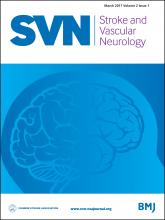There are several problems with the report of Li et al.1 They studied sex differences, not gender differences.2 They referred to carotid intima-media thickness (IMT) as atherosclerosis; it is not, and plaque burden is a much stronger predictor of cardiovascular risk than IMT.3 They referred to levels of homocysteine (Hcy), but almost certainly what they measured was total homocysteine (tHcy), which includes homocysteine, its dimer homocystine and mixed homocysteine/cysteine disulfide.4 Their conclusion that homocysteine levels are not associated with carotid atherosclerosis is invalid, because (a) they did not measure atherosclerosis; they only identified the presence or absence of plaque and (b) the range of homocysteine levels they studied was above the threshold for increased plaque with increasing levels of tHcy, as previously reported.5
Figure 1 shows the total plaque area in 2635 patients in my clinic database with levels of tHcy grouped as <10 (n=1296), 10–13.9 (n=837), and >14 μmol/L (n=502). Plaque burden was significantly greater with higher levels of plasma tHcy (p<0.0001).
Among 2635 patients in the database of vascular prevention clinics, higher tHcy was associated significantly with higher total plaque area (p<0.0001; ANOVA). ANOVA, analysis of variance; tHcy, total homocysteine.
The authors should reanalyse their data using lower thresholds of tHcy: something like <10, 10–13.9 and >14 μmol.
Footnotes
Contributors The letter was written and the figure composed by JDS.
Competing interests JDS is an officer of Vascularis.
Ethics approval University of Western Ontario Human Subjects Research Ethics Board.
Provenance and peer review Not commissioned; internally peer reviewed.
Data sharing statement Data may only be shared with approval of the University of Western Ontario Human Subjects Research Ethics Board.
This is an Open Access article distributed in accordance with the Creative Commons Attribution Non Commercial (CC BY-NC 4.0) license, which permits others to distribute, remix, adapt, build upon this work non-commercially, and license their derivative works on different terms, provided the original work is properly cited and the use is non-commercial. See: http://creativecommons.org/licenses/by-nc/4.0/







